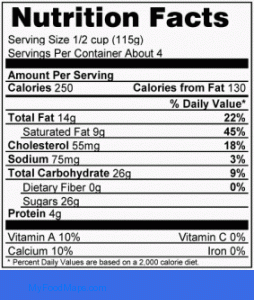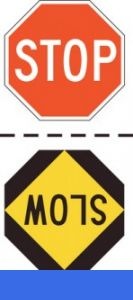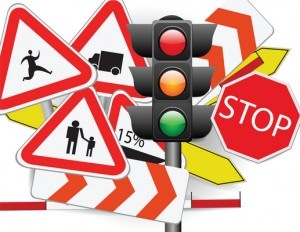 Sugar is sweet but it’s also sneaky, masquerading under many different names. Read one of those jam labels that says, “All Fruit” or “Spreadable Fruit” on the front. Then turn the jar over and read ingredients. Most likely you’ll find juice concentrates (often as the first ingredient) and maltodextrin — both forms of sugar.
Sugar is sweet but it’s also sneaky, masquerading under many different names. Read one of those jam labels that says, “All Fruit” or “Spreadable Fruit” on the front. Then turn the jar over and read ingredients. Most likely you’ll find juice concentrates (often as the first ingredient) and maltodextrin — both forms of sugar.
How Good Is Your Sugar Vocabulary?
According to Environmental Nutrition foods with all of the following names are sugars (these are common sources, there are other sugars that aren’t listed here):
- Dextrose
- Corn syrup
- High fructose corn syrup
- Maltodextrin
- Fruit juice concentrates
- Malt syrup
- Molasses
- Invert sugar
- Honey
- Sorghum
- Agave
- Maple syrup
- Cane sugar
Added Vs. Natural Sugars
The sugars that you eat can occur naturally or be added. Natural sugars are found naturally in the food — like fructose in fruit and lactose in milk. Added sugars are the many kinds of sugar and syrup – including sweeteners like honey, agave, and maple syrup, for example — that are added into food at the table or during the food’s preparation or processing.
Common Sources Of Added Sugars
Some sources are obvious – others require a bit of checking of the ingredients label. Here are some examples of foods that usually have added sugar:
- Regular soft drinks
- Sugar; syrups (do you put maple syrup on your pancakes?); and candy
- Cakes; cookies; pies; donuts; pastries; breakfast and snack bars
- Fruit drinks like fruitades and fruit punch; sweetened teas, sports drinks, and flavored water
- Dairy desserts and milk products like ice cream; sweetened yogurt; pudding; and flavored milk
- Many cereals; toast with jelly/jam; and many breads — both home made “quick breads” and store-bought sliced breads
- Sweeteners added to coffee, tea, cereal; canned fruit
Not More Than Half Of Your Discretionary Calorie Allowance
What’s daily discretionary calorie allowance? It’s the number of calories you have left to use after you meet your nutrient needs — without exceeding your energy needs.
In other words, they are the calories that you can use up eating different types of foods after you’ve eaten enough to meet your body’s nutrition needs — but not so many that they would contribute to weight gain.
Discretionary calories can come from any source of calories (protein, fat, carbohydrates, alcohol). The American Heart Association recommends that no more than half of your daily discretionary calories come from added sugars.
For most American women that’s no more than 100 calories a day, or about 6 teaspoons of sugar. For men, that’s no more than 150 calories a day, or about 9 teaspoons of sugar. (FYI there are about 10 teaspoons of sugar in a 12 ounce can of regular soda.)



